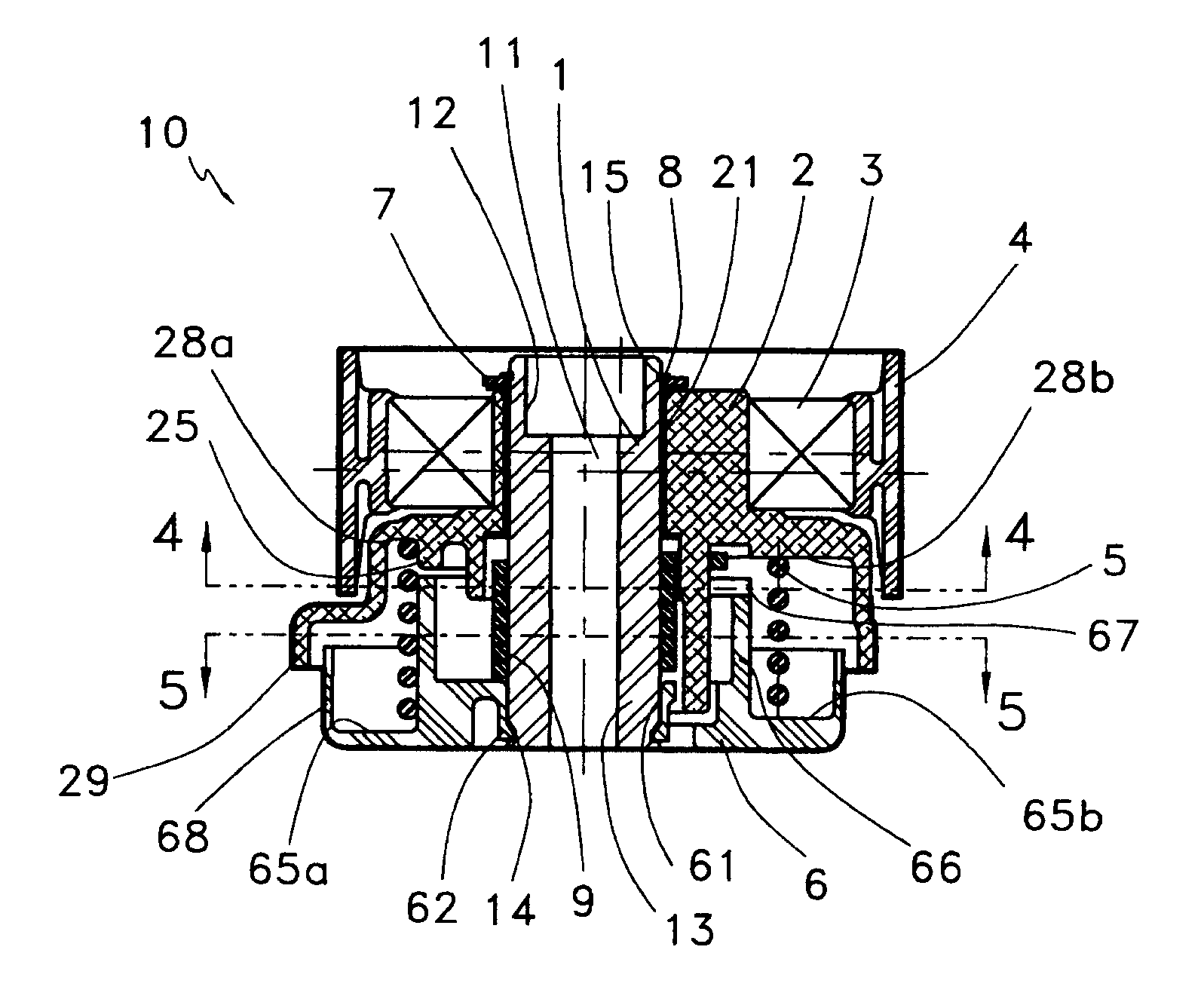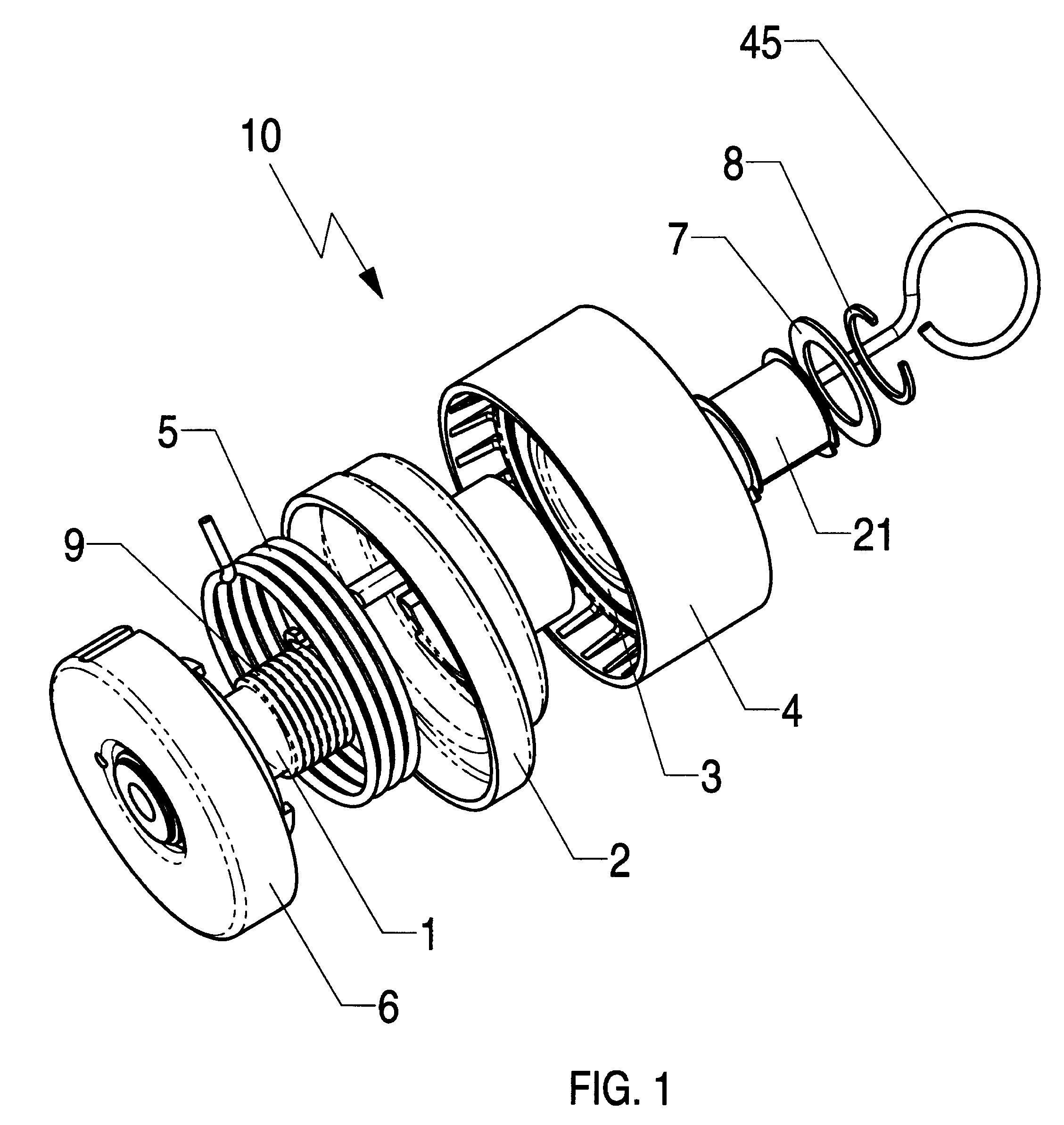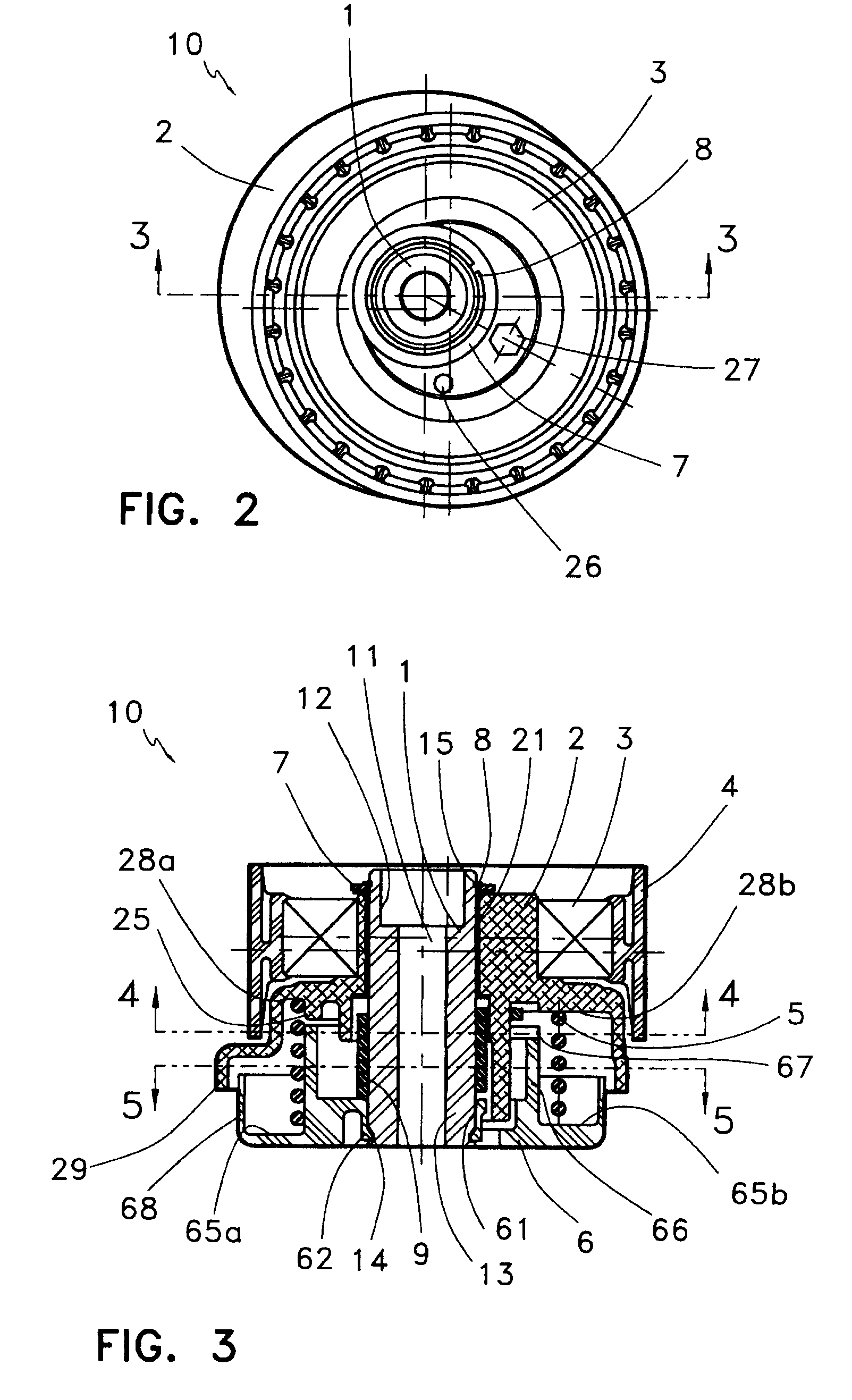Tensioner with reinstallation feature
a technology of reinstallation and tensioner, which is applied in the direction of belt/chain/gearing, mechanical equipment, belts, etc., can solve the problems of the total return of the tensioner arm, the serious drawback, and the return torque required to rotate the arm away from the belt, so as to prevent the excessive opening of the clutch spring coil, restrict the radial vibration of the spring coil, and limit the distortion and vibration of the spring
- Summary
- Abstract
- Description
- Claims
- Application Information
AI Technical Summary
Benefits of technology
Problems solved by technology
Method used
Image
Examples
Embodiment Construction
[0036]A tensioner in accordance with the present invention is indicated generally at 10 in FIGS. 1 and 3. As shown, the tensioner 10 comprises a pivot shaft 1, arm 2 including a pivot bushing 21 rotationally mounted about the pivot shaft 1, a bearing 3 mounted on the arm 2 carrying a pulley 4, a main spring 5, a base cup 6, a top washer 7, a lock ring 8 and a clutch spring 9.
[0037]The pivot bushing 21 allows the arm 2 rotate about the centre axis of the pivot shaft 1 while being biased towards the belt (not shown) by the main spring 5 mounted between the arm 2 and the base cup 6 and / or a corresponding spring tang mounting slot in the engine (not shown). The top washer 7, while being prohibited to move axially out from the pivot shaft 1 by the lock ring 8, placed into a ring groove 15 of the pivot shaft 1, will prevent the arm 2 moving out of its position on and around the pivot shaft 1. The arm 2 also has a tooling hole 27 formed on its top face to allow the arm 2 being rotated away...
PUM
 Login to View More
Login to View More Abstract
Description
Claims
Application Information
 Login to View More
Login to View More - R&D
- Intellectual Property
- Life Sciences
- Materials
- Tech Scout
- Unparalleled Data Quality
- Higher Quality Content
- 60% Fewer Hallucinations
Browse by: Latest US Patents, China's latest patents, Technical Efficacy Thesaurus, Application Domain, Technology Topic, Popular Technical Reports.
© 2025 PatSnap. All rights reserved.Legal|Privacy policy|Modern Slavery Act Transparency Statement|Sitemap|About US| Contact US: help@patsnap.com



